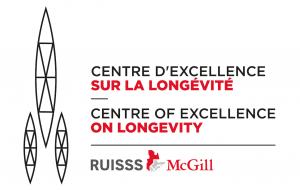Elderly ER patients and frailty: Feasibility of “Ed-Screener”
Background
The use of emergency departments by the elderly is in continuous increase, largely due to the aging population. However, emergency departments are not suited to effectively deal with the complex needs of the frail elderly. The use of standardized risk assessment tools and discharge planning based on the identification of this risk could have major consequences for not only patient-centred outcomes, such as length of stay or autonomy, but on ER outcomes (reduced return visits and decreased waiting times).
Objectives
This study is expected to advance knowledge and clinical practice relative to the assessment and identification of patients who present a high risk for negative outcomes in the acute care hospital system. More specifically, objectives are:
- To determine median administration times for all of the instruments; to determine whether some instruments were incomplete due to time constraints or patient fatigue
- To determine the percentage adherence to instrument administration (expected versus actual instrument completion)
- To determine the proportion of patients aged 75 and over with ED screener scores of 5 or 6
- To determine the proportion of patients with ED screener scores which require comprehensive geriatric evaluation (AC); this measure will allow us to determine the “false-positive” rate of the ED screener. We will also be testing the false negative rate (or confirming the threshold for more detailed evaluations) by completing ED-CA assessments on patients with ED screener scores of 4–6
- To determine the association between ED screener scores (or AUA scores) of 5 and 6, and clinical outcomes such as: Hospital length of stay, ICU admission, mortality, disposition at discharge, cognitive impairment, delirium, loss of autonomy in iADL and ADL (grouped and individual items), falls, prior hospital visits, and undernutrition. Examining these associations will enable us to determine which domains would most benefit from targeted interventions to improve patient-centred outcomes
Methods
The design is a prospective observational study which evaluates the use of the interRAI Emergency Department Screener, the interRAI Emergency Department Contact Assessment (ED-CA) and the interRAI AcuteCare (AC) Assessment as a standardized systems approach to identify and address the needs of frail elderly patients in the acute care hospital setting.
This is accomplished through implementation of these instruments in up to 15 hospitals across Canada. Patients 75 and older who were admitted to an emergency department will be included. Depending on the length of stay, certain portions of the interRAI Acute Care could be completed up to a maximum of four times (premorbid, admission, review and discharge). Evaluations will only be done while the patient is in hospital. The estimated total number of completed ED screeners is 5,000.
This study only involves the completion of questionnaires, with the ED screener to be completed for all patients and more detailed assessments to take place for patients scoring 5 or more on the ED screener.
Partners
Faculty of Medicine, McGill University
Emergency Department, Jewish General Hospital
Emergency Department, Centre Hospitalier Universitaire de Montréal, CHUM



